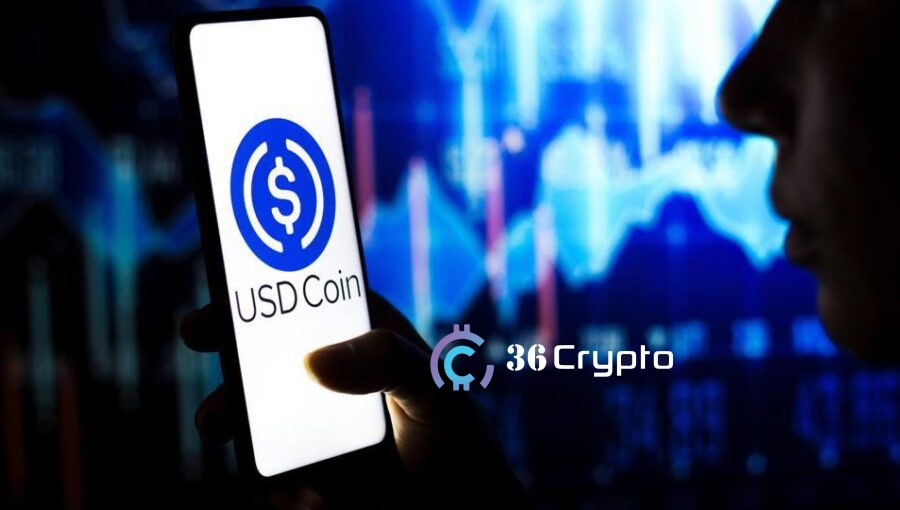The USD Coin (USDC) is a stablecoin pegged to the U.S. dollar; it is one of those coins that bridge the gap between fiat currencies and electronic coins.
(Stablecoins are the link between fiat currency and cryptocurrency—they’re known to be stable in value because they’re usually pegged to a renowned cryptocurrency, fiat currency, or commodity money like the dollar, euros, gold, etc.).
USDC was released in September 2018 under the management of a consortium called Centre, a company founded by Circle. Like the USD Tether (USDT), USD Coin serves as the electronic equivalent of the U.S. dollar (but isn’t issued and controlled by the government of the United States of America or any of its central authorities).
A Brief History of USD Coin
The USD Coin is a fiat-collateralized stablecoin; it is pegged to the U.S. dollar, the official legal tender of the country. The USD Coin was developed and launched in October 2018 as a digital replica of the highly valued legal currency of the U.S.A.
A collaboration between Circle and Coinbase led to the birth of Centre consortium, a developing company that was the platform for the creation of the now-highly-valued stablecoin and token. As a stablecoin, USD Coin is the solution to a couple of currency problems in blockchain technology: volatility and the unpredictable process of changing conventional cryptos to fiats.
Exchange platforms favor the use of stablecoins like USDC as a replacement for traditional currencies—this way, they bypass financial or central institutions without missing the stability and predictability of their currencies.
USDC-Compatible Blockchains
USD Coin is not exactly a cryptocurrency because it doesn’t have a blockchain of its own. USD Coin is a crypto token (tokens are different from cryptocurrencies in that they function on existing blockchains, while crypto coins or cryptocurrencies operate on their own blockchain protocol).
USDC works with several blockchains. Here they are:
- ETHEREUM: The Ethereum blockchain is an open-source blockchain with the smart contract Ether (ETH) as its native cryptocurrency.
- ALGORAND: Algorand claims to be the most decentralized, scalable, and secure blockchain infrastructure in the world. It increases transaction speed through a two-tiered system and a unique variation of the Proof-of-Stake mechanism. The Algo is the cryptocurrency of the Algorand blockchain ecosystem.
- SOLANA: Based on its official claims, Solana is the fastest blockchain in the world and the fastest growing cryptocurrency network. Solana has thousands of projects in NFTs, Defi, Web3, etc. Solana is home to SOL, its native cryptocurrency.
- STELLAR: Stellar, or Stellar Lumens, is a blockchain network and exchange platform with a built-in decentralized exchange for forex, crypto, or securities. The Stellar blockchain’s cryptocurrency is called the LUMEN, with the symbol XLM.
- TRON: The minds behind the Tron Blockchain network are staunch believers in decentralization and a truly free and independent internet. The native cryptocurrency of Tron is TRONIX.
Why do some Crypto Users choose USD Coin?
Exchange platforms, traders, and crypto users favor the USDC as they do other leading stablecoins like the USD Tether because of the following reasons:
- Stability: Not everyone wants to take risks too often. If all a blockchain user or intending user is an electronic equivalent of fiat currencies, a leading stablecoin like the USD Coin is the right choice.
- Pricing in fiat currencies: Stablecoins like USDC come in handy when pricing virtual assets on crypto exchange networks. They’re the only way to use electronic currencies as you would fiats.
- Trust and reliability: Highly volatile cryptocurrencies or tokens feel like a time in the casino or gambling shop for many crypto users. They’d rather give the reliance that is due to government-owned and controlled financial institutions to a stablecoin.
- Anti-inflation strategy: Many individuals, especially from less developed countries, have no confidence in their currencies. They, therefore, run to cryptocurrencies or tokens pegged to highly rated fiats to protect the value they have in store.
Key Take-home Points:
- USD Coin (USDC) is a fiat-collateralized stablecoin—it is backed by a fiat currency (the U.S. dollar).
- Like the USD Tether (USDT), USD Coin (USDC) serves as the electronic equivalent of the U.S. Dollar (but isn’t issued and controlled by the government of the United States of America or any of its central authorities).
- Tokens are different from cryptocurrencies in that they function on existing blockchain networks, while cryptocurrencies operate on their own blockchain protocol.

